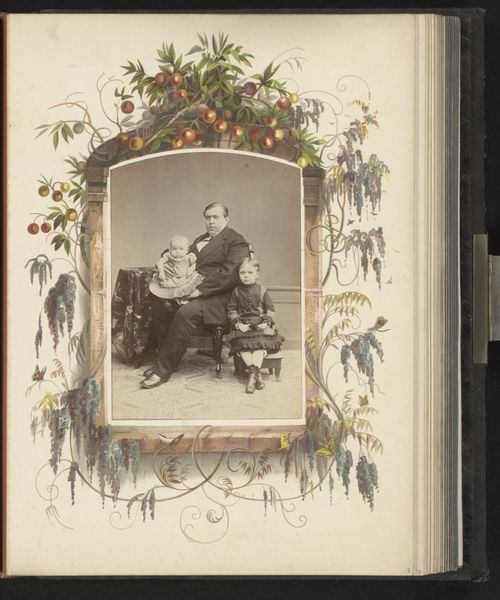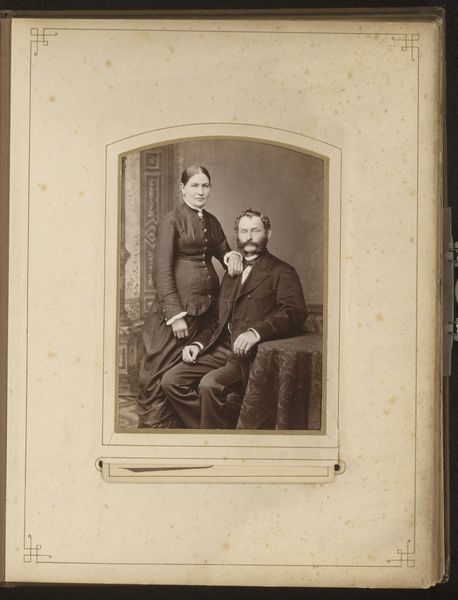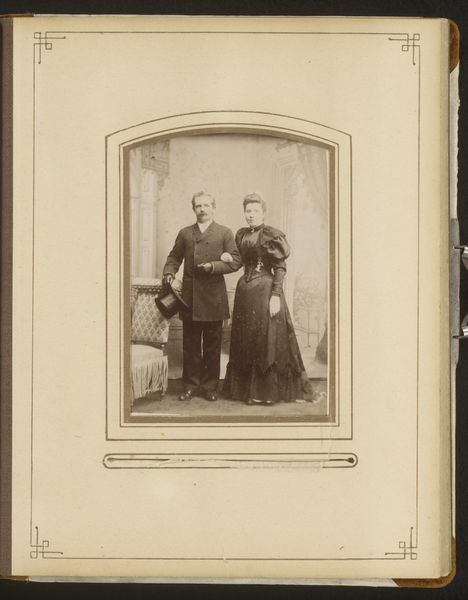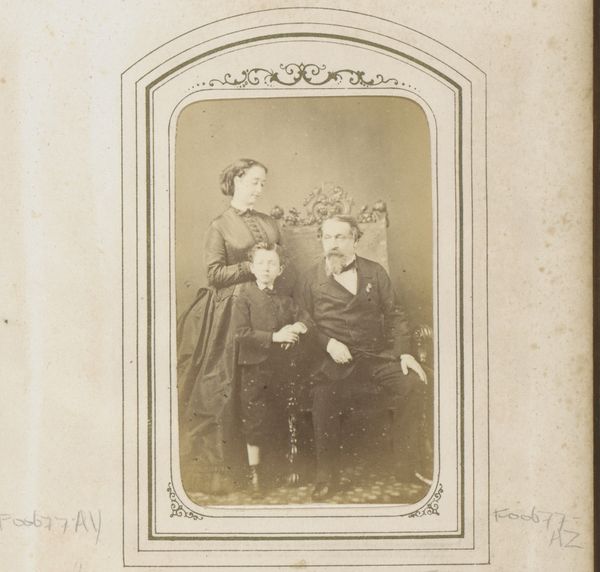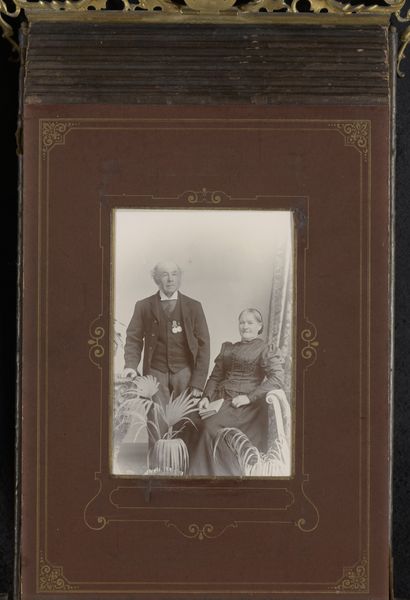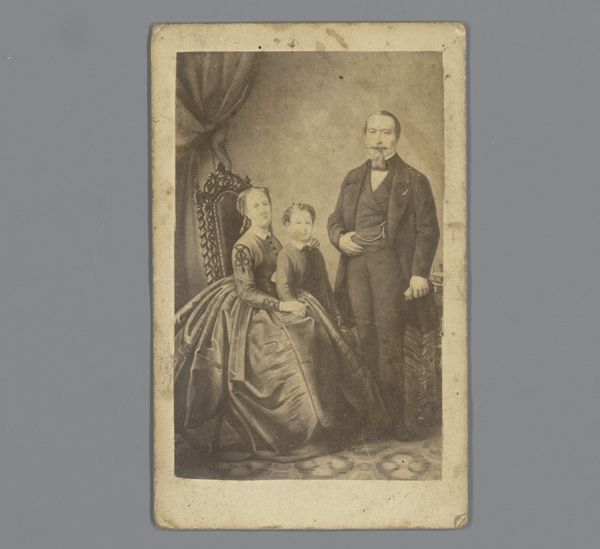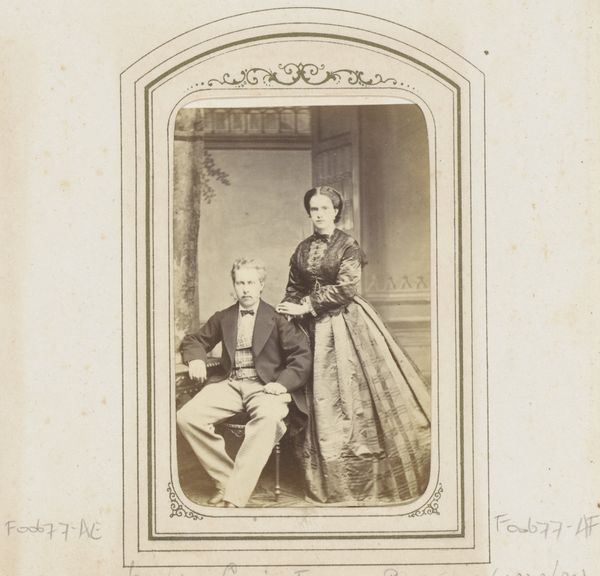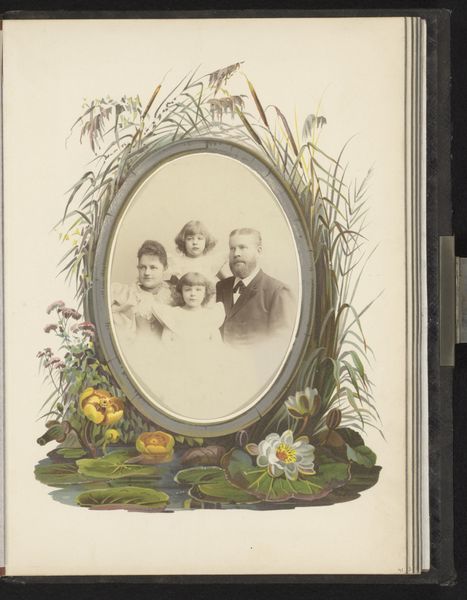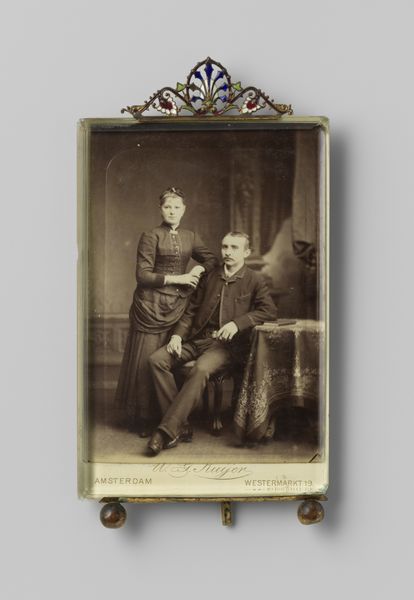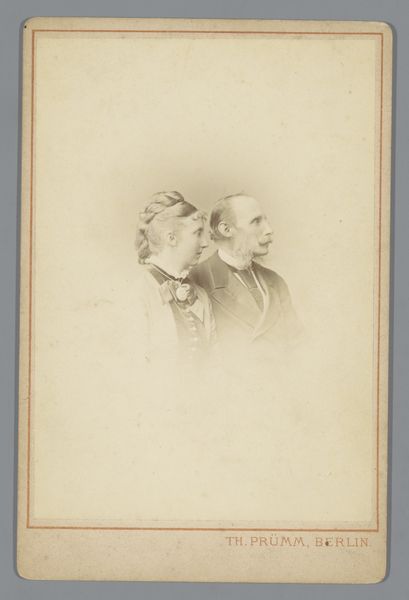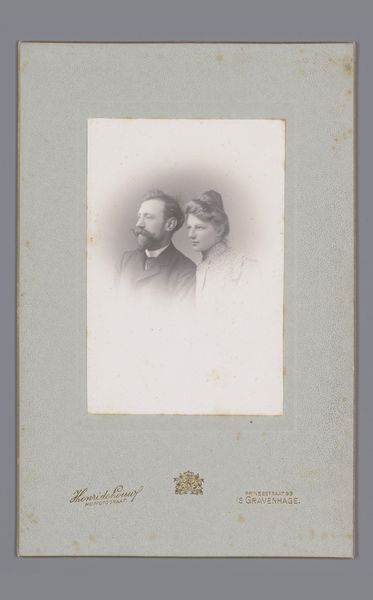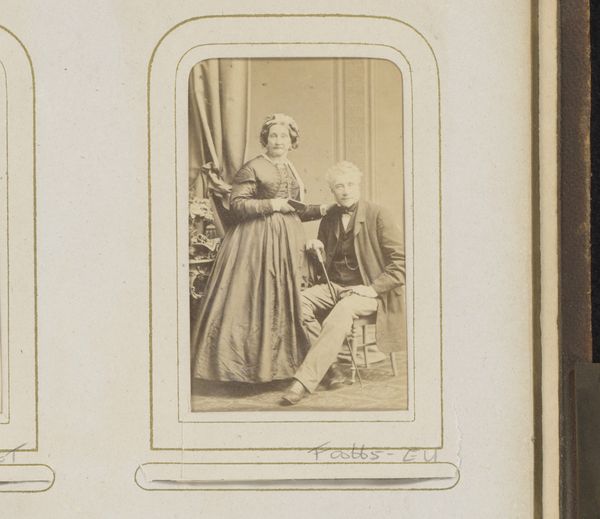
photography
#
portrait
#
photography
#
genre-painting
Dimensions: height 135 mm, width 96 mm
Copyright: Rijks Museum: Open Domain
Curator: The tones give this portrait an old world aesthetic, it has a formality which is really emphasised through the composition and tones. Editor: Indeed, the photograph, dating roughly from 1875 to 1899, is credited to Jean Baptiste Feilner and is entitled "Portret van een man en een vrouw bij een tafel met een boek." Note the careful framing, both literal and pictorial: hand-painted foliage of fruiting trees and wisteria surround a conventionally posed, yet intriguing scene of bourgeois life. Curator: Framing as artifice seems relevant here. We’re directed, via compositional elements, to read it a certain way. The book, the table, even their sombre attire, guide us toward certain narratives of wealth, piety, seriousness. The arrangement shows these as qualities to be respected. Editor: Precisely! And how meticulously those qualities are rendered. Observe how the painter’s hand imbues specific symbolism. Fruit can symbolize fertility or abundance, whilst the cascading wisteria is a symbol of longevity and perhaps even immortality, both painting and photograph thus collaborate to create a complex semiotic portrait, imbuing these individuals with meaning. Curator: You are correct, that the book serves less as a functional object and more as a stage prop to indicate the sitters were not only affluent but learned. This use of objects as compositional aids—and signifiers—demonstrates photography emulating painted portraiture. The book’s geometric relationship with the table, man’s arm, draws the eye to the subjects, with their faces as focal points. Editor: Their faces though! Are fascinating precisely because of the stiffness. What does it mean that people are displayed but with barely a sign of personality? The symbolism suggests prosperity, security and generational continuity, yet faces hint at the anxieties of modernity and a certain disconnect. They speak volumes without a clear narrative and thus invites modern audiences to consider, and reconsider its symbolic vocabulary. Curator: It's in this relationship that this photograph succeeds. We are asked to read symbolic meaning from not only compositional choices but from the sitter's almost absent expressions. We understand from the composition what to feel, and then can look into the character for a sense of confirmation. Editor: It's true, the portrait offers multiple lenses through which one might read these subjects, these themes—an insightful peek into both past aspirations and the artifice of constructed identity.
Comments
No comments
Be the first to comment and join the conversation on the ultimate creative platform.
